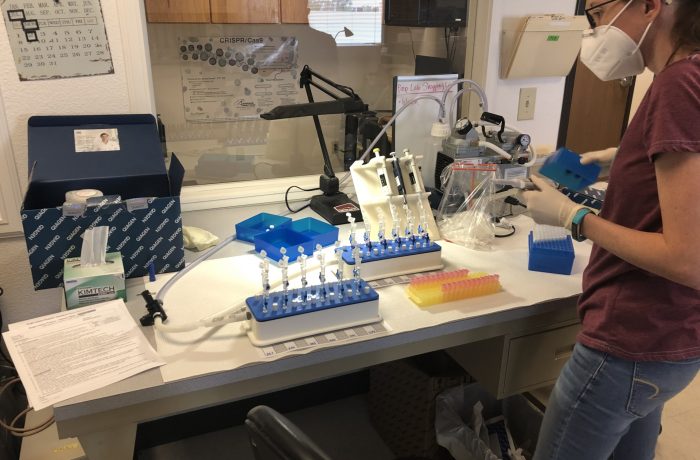Right from Pisces’ beginning we have archived all sample DNA extracts. Our typical spin-column DNA extraction procedure gives a final volume of DNA extract of 200 µL. A PCR or qPCR reaction uses 2 to 4 µL of DNA extract, so even testing in triplicate (the standard for eDNA samples) uses only 12 µL. Rather than discarding the remaining extracts, we thought it prudent to save these, with the possibility that they might be useful for retesting or new tests in the future. This paid off spectacularly some years ago when Barry Nehring from the Colorado Division of Wildlife (now Colorado Parks & Wildlife) was studying the epidemiology of Whirling Disease in Windy Gap Reservoir in Colorado. By retesting archived tubifex worm DNA extracts, originally tested (only) for the presence of M. cerebralis, with our then newly developed multiplex tubifex lineage qPCR assay (previous story), Barry was able to follow the change in tubifex lineage composition across a period of six years with two months of retesting archived samples – an “instant” temporal study (Nehring, et al., 2013). Sample submitters have availed themselves of this archive – now greater than 165,000 samples - numerous times since then.
References:
Nehring, R.B., B. Hancock, M. Cantanese, M.E. Stinson, D. Winkleman, J. Wood, and J. Epp. 2013. Reduced Myxobolus cerebralis actinospore production in a Colorado reservoir may be linked to changes in Tubifex tubifex population structure. Aquatic Animal Health 25(3): 205-220. DOI: 10.1080/08997659.2013.788581

